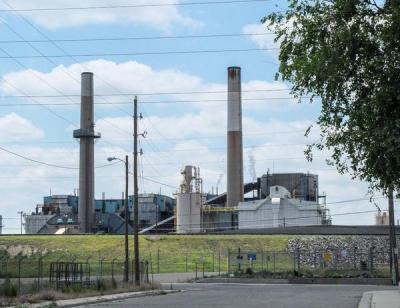America is back at mid-1990s levels of carbon dioxide emissions. Some of that is due to the ongoing recession, of course, but a large chunk is due to the switch from the dirty coal plants that ballooned after America stopped producing emissions-free nuclear energy to natural gas.
While energy overall is back at early 1990s levels of emissions, coal specifically is back at early 1980s levels of emissions.
And it's all been done without mitigation, rationing or increased cost, even during a political climate of hostility against traditional energy. It isn't just CO2; "combined cycle" natural gas power plants also release significantly less nitrogen oxides and sulfur dioxide, finds a study
in Earth's Future.
"Since more and more of our electricity is coming from these cleaner power plants, emissions from the power sector are lower by 20, 30 even 40 percent for some gases since 1997," said lead author Joost de Gouw, an atmospheric scientist with the National Oceanic and Atmospheric Administration's Cooperative Institute for Research in Environmental Sciences (CIRES) at the University of Colorado Boulder.

In 2013, Xcel Energy decommissioned this coal-fired power unit in Denver's Arapahoe Station. If that trend continues, the politicians that hate energy will have to subsidize dirtier coal mining, because those are all union workers. Photo by Will von Dauster of National Oceanic and Atmospheric Administration
De Gouw, who works at NOAA's Earth System Research Laboratory (ESRL), and his NOAA and CIRES colleagues analyzed data from systems that continuously monitor emissions at power plant stacks around the country. Previous aircraft-based studies have shown these stack measurements are accurate for carbon dioxide (CO2) and for nitrogen oxides and sulfur dioxide. Nitrogen oxides and sulfur dioxide can react in the atmosphere to form tiny particles and ozone, which can cause respiratory disease.
To compare pollutant emissions from different types of power plants, the scientists calculated emissions per unit of energy produced, for all data available between 1997 and 2012. During that period of time, on average:
- Coal-based power plants emitted 915 grams (32 ounces) of CO2 per kilowatt hour of energy produced;
- Natural gas power plants emitted 549 grams (19 ounces) CO2 per kilowatt hour; and
- Combined cycle natural gas plants emitted 436 grams (15 ounces) CO2 per kilowatt hour.
In combined cycle natural gas plants, operators use two heat engines in tandem to convert a higher fraction of heat into electrical energy. For context, U.S. households consumed 11,280 kilowatt hours of energy, on average, in 2011, according to the U.S. Energy Information Agency. This amounts to 11.4 metric tons per year of CO2 per household, if all of that electricity were generated by a coal power plant, or 5.4 metric tons if it all came from a natural gas power plant with combined cycle technology.
The researchers reported that between 1997 and 2012, the fraction of electric energy in the United States produced from coal gradually decreased from 83 percent to 59, and the fraction of energy from combined cycle natural gas plants rose from none to 34 percent.
That shift in the energy industry meant that power plants, overall, sent 23 percent less CO2 into the atmosphere last year than they would have, had coal been providing about the same fraction of electric power as in 1997, de Gouw said. The switch led to even greater reductions in the power sector's emissions of nitrogen oxides and sulfur dioxide, which dropped by 40 percent and 44 percent, respectively.
The new findings are consistent with recent reports from the Energy Information Agency that substituting natural gas for coal in power generation helped lower power-related carbon dioxide emissions in 2012.





Comments